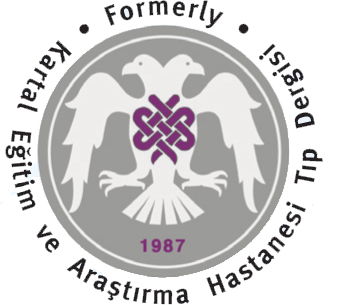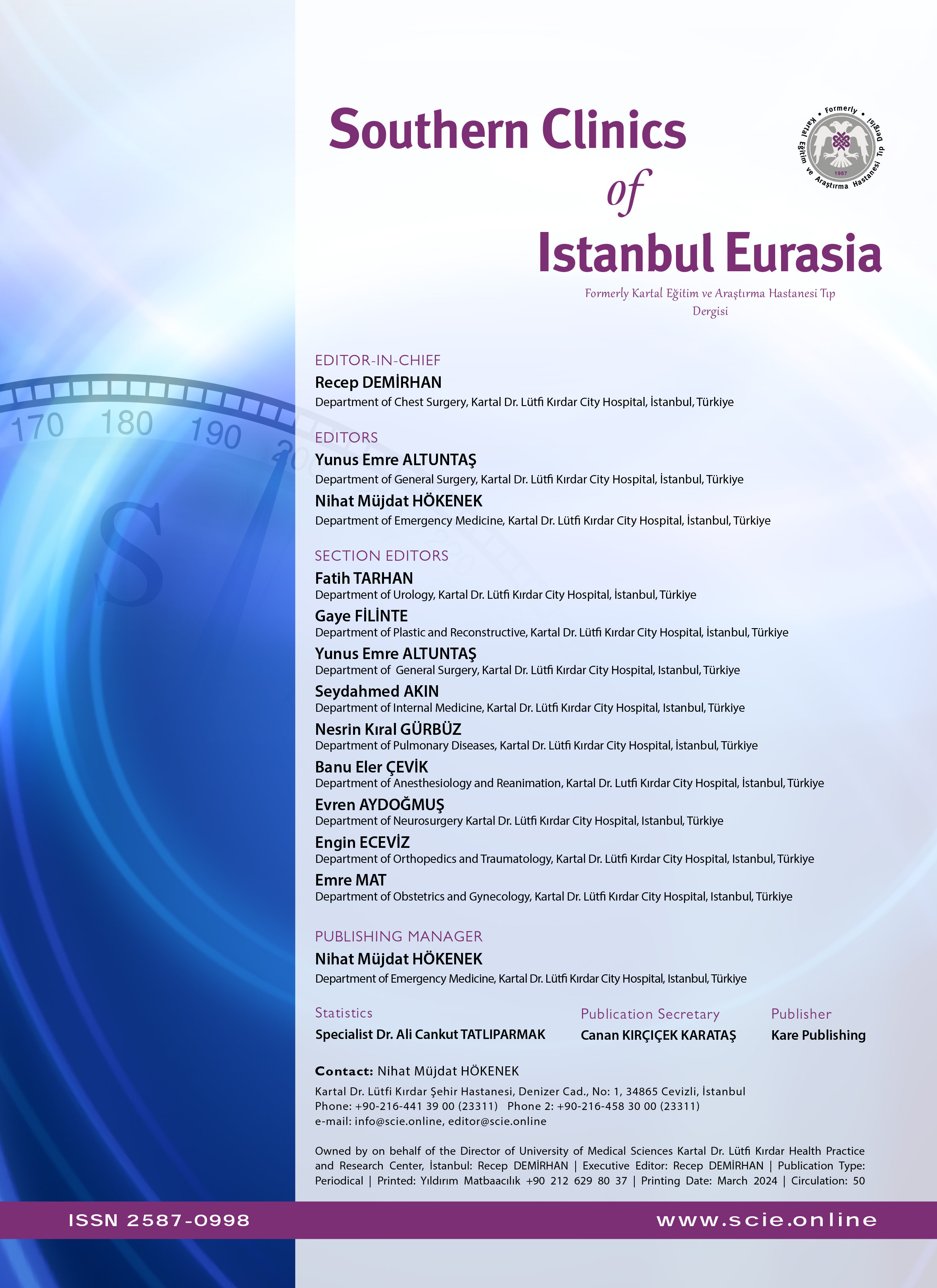PAROSTEAL OSTEOSARCOMA PRESENTING DIFFICULTY IN DIAGNOSIS, CASE REPORT
Ender Sarıoğlu1, Önder Ofluoğlu1, Güven Bulut1, Nimet Karadayı1, Muzaffer Yıldız1Dr.Lütfı Kırdar Kartal Eğitim ve Araştırma Hastanesi II. Ortopedi ve Travmatoloji KliniğiParosteal osteosarcoma is a low grade malignant tumor arising from surface of the bone. Firstly it was described by Geschickter and Copeland in 1951. It accounts for 1 % of all malignant tumors and 4% of all osteosarcomas. It distinctly seen at later age than conventional osteosarcoma. 60% of patients are in their third and fourth decade. It was seen rarely before growth cessation. It has a tendency to arise on the posterior aspect of the distal femur. Clinically long term painless swelling is the most significant symptom. If the swelling localized on the popliteal fossa, flexion of the knee joint could be restricted. Many studies show that parosteal osteosarcoma have a well-differentiated apperance (stage I-A or B). Radiographically, it is heavily ossified large mass and it holds on to the bone beneath with a wide surface. Intralesional deep localized radiolucency is often with parosteal osteosarcoma. Differential diagnosis comprise: Periostitis, myositis ossificans, parosteal osteoma, egzostosis, periferic condrosarcoma. periosteal chondrosarcoma and conventional high grade osteosarcoma. Many studies show that parosteal osteosarcoma has diffuculty in diagnosis which causes delayed surgical treatment. In this article we discussed a parosteal osteosarcoma case that presents diffuculty in diagnosis after 38 mounths follow up, with the review of the literature.
Keywords: PAROSTEAL, OSTEOSARCOMA, DIAGNOSIS, TREATMENTTANI GÜÇLÜĞÜ ARZEDEN PAROSTEAL OSTEOSARKOM OLGUSU
Ender Sarıoğlu1, Önder Ofluoğlu1, Güven Bulut1, Nimet Karadayı1, Muzaffer Yıldız1Dr.Lütfı Kırdar Kartal Eğitim ve Araştırma Hastanesi II. Ortopedi ve Travmatoloji KliniğiParosteal osteosarkom kemik yüzeyinden gelişim gösteren düşük dereceli malign bir tümördür. İlk olarak 1951 yılında Geschickter ve Copeland tarafından tanımlanmıştır. Bütün malign tümörlerin %1'ini ve bütün osteosarkomların %4'Unü teşkil etmektedir. Klasik osteosarkoma oranla daha geç yaşta gözlenir. Olguların %60'ı 3. ve 4. dekadlardadır. Büyümenin durmasından önce çok nadir olarak görülür. Sıklıkla distal femur şaftının posterior yüzünde gözlenir. Ağrısız uzun süreli şişlik en önemli semptomudur. Eğer şişlik popliteal fossaya lokalize olursa dizde fleksiyon kısıtlılığı gözlenebilir. Yapılan çalışmalar parosteal osteosarkomun sıklıkla iyi diferansiye olduğunu göstermektedir (Evre I-A veya B). Radyolojik olarak altındaki kemiğe geniş bir yüzey ile tutunan, yoğun, büyük bir kitledir. İntralezyonel derin yerleşimli radyolusensi sıklıkla indiferansiye parosteal osteosarkom ile beraberlik gösterir. Ayırıcı tanıda periostit, miyositis ossifıkans, parosteal osteoma, ekzositoz, periferal kondrosarkom, periosteal kondrosarkom, konvansiyonel yüksek dereceli osteosarkom yer almaktadır. Birçok çalışmada, parosteal osteosarkomun çoğu zaman cerrahi tedavisinin gecikmesine neden olan tanı güçlüğünden söz edilmektedir. Bu çalışmada tanı güçlüğü arz eden bir parosteal osteosarkom olgusu, literatür bilgileri eşliğinde, post operatif 38 aylık takibi ile tartışılmıştır.
Anahtar Kelimeler: PAROSTEAL, OSTEOSARKOM, TANI TEDAVİManuscript Language: Turkish



















